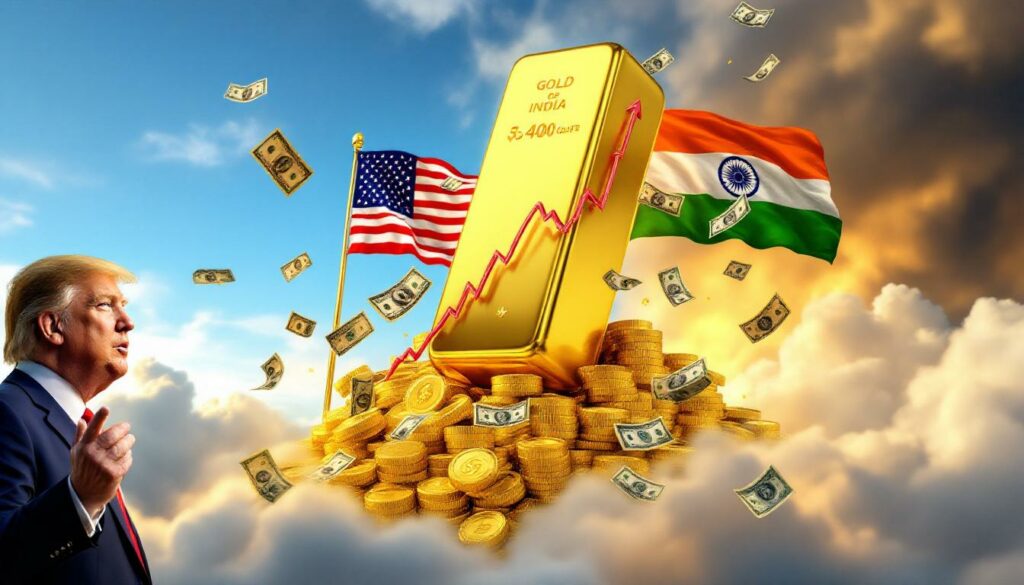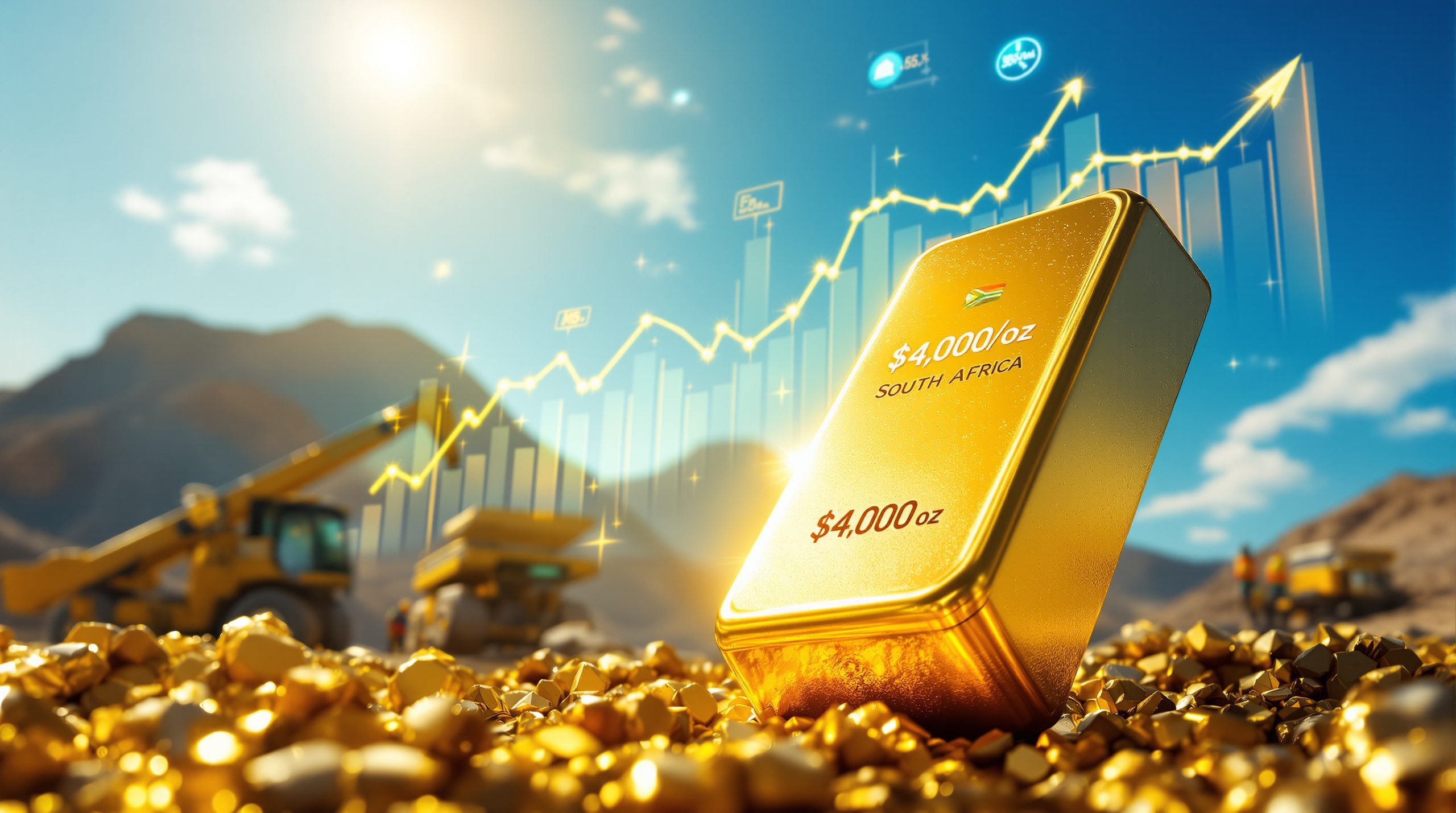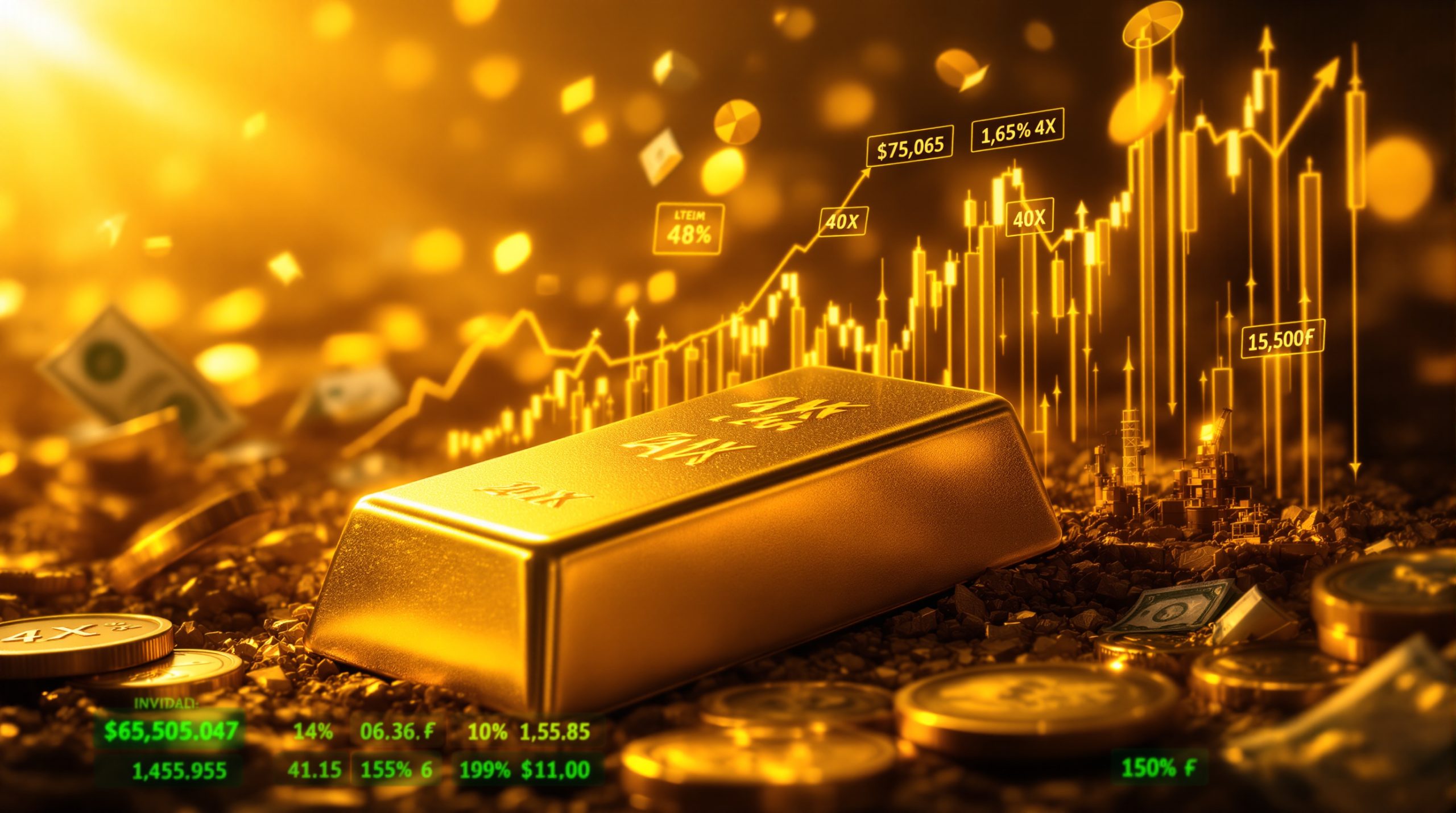Gold Gains as Trump Doubles India Tariffs: Market Impact and Safe-Haven Appeal
Gold prices are climbing as investors seek safety amid escalating trade tensions following the announcement of new tariffs on Indian imports. This market reaction highlights gold's enduring role as a financial safe harbor during periods of geopolitical uncertainty and economic turbulence.
Understanding Trump's Latest Tariff Decision
The announcement of additional 25% tariffs on Indian imports has sent ripples through global markets, particularly affecting precious metals prices. This decision, attributed to India's continued purchases of Russian oil, represents a significant escalation in trade policy.
The new import taxes are scheduled to take effect 21 days after August 7, creating a short window before implementation. For some Indian exports, this will result in combined duties reaching as high as 50%, positioning them among the highest levied on any U.S. trading partner.
Trade negotiations between Washington and New Delhi had reached an impasse prior to this announcement, with bilateral discussions failing to resolve key issues. This breakdown in talks ultimately led to the unilateral Trump tariff implications.
Gold's Immediate Market Response
The precious metals market responded swiftly to the tariff news:
- Spot gold rose 0.4% to $3,380.76 per ounce
- U.S. gold futures gained 0.3% to $3,443.30
- The market is approaching the psychological threshold of $3,400 per ounce
This upward movement reflects strengthened safe-haven demand as investors seek protection from the uncertainty created by escalating trade tensions. Market analysts note this reaction aligns with historical patterns where gold benefits during periods of geopolitical friction.
How Trade Tensions Impact Precious Metals Markets
Trade disputes historically create favorable conditions for gold price appreciation. When global commerce faces disruption through tariffs impact on markets, investors typically seek assets perceived as stores of value.
Gold as a Defensive Investment Strategy
Gold's performance during trade tensions can be attributed to several factors:
- Portfolio insurance: Investors utilize gold allocations to hedge against market volatility
- Currency protection: Gold offers insulation from currency devaluation risks
- Historical precedent: Previous trade conflicts have coincided with gold price rallies
- Reduced correlation: Gold often moves independently from traditional financial assets
Market analysts consistently observe that gold remains "in the frame as a defensive play" during periods of trade conflict. This positioning becomes particularly relevant as tariff threats escalate across multiple trading relationships.
"Gold's performance during trade tensions demonstrates its role as portfolio insurance rather than simply a commodity. When geopolitical uncertainty rises, the metal's safe-haven characteristics become increasingly valuable to institutional investors." – Market Strategist
Broader Impact on Risk Assets
The current tariff situation has left risk assets "off-balance" as markets digest the implications. Equities typically face headwinds during trade disputes while defensive assets like precious metals and government bonds attract increased investor interest.
Institutional investors often respond to trade tensions by rebalancing portfolios, increasing allocations to protective investments like gold. This shift in capital flows can create sustained price support for precious metals that extends beyond the immediate headline reaction.
Monetary Factors Supporting Gold's Rise
While trade tensions provide the immediate catalyst, underlying monetary conditions create a supportive environment for gold appreciation.
Dollar Weakness and Gold Pricing
The dollar index has been hovering near a one-week low following weaker-than-expected U.S. jobs data. This currency weakness amplifies gold's appeal through several mechanisms:
- A weaker dollar makes gold less expensive for holders of other currencies
- Currency depreciation concerns enhance gold's appeal as a monetary alternative
- International buyers can acquire more gold per unit of local currency
- Historical inverse relationship between dollar strength and gold prices remains intact
The interconnection between currency markets and precious metals creates a feedback loop where dollar weakness reinforces gold's attractiveness in international markets.
Federal Reserve Rate Cut Expectations
Current market pricing indicates a 94% probability of a 25-basis point rate cut in September, reflecting shifting monetary policy expectations. Minneapolis Fed President Neel Kashkari has indicated potential near-term rate cuts may be necessary due to signs of economic slowing.
Low-interest-rate environments historically favor gold performance for several reasons:
- Reduced opportunity cost of holding non-yielding assets like gold
- Increased liquidity in financial markets supporting commodity prices
- Potential inflationary concerns from monetary easing
- Weakened currency effects enhancing gold's relative value
The intersection of trade tensions and accommodative monetary policy creates particularly favorable conditions for gold price forecast appreciation. However, uncertainty remains about how new tariffs might influence inflation calculations and subsequent Federal Reserve decisions.
How Are Other Precious Metals Performing?
While gold captures headlines, other precious metals demonstrate varying responses to the current market environment.
Silver Market Movements
Silver has shown positive momentum alongside gold, with spot prices rising 0.3% to $37.98 per ounce. Silver typically follows gold's trajectory but with amplified volatility due to its smaller market size and dual role as both precious and industrial metal.
Key factors influencing silver include:
- Industrial demand sensitivity creating different price dynamics than gold
- Higher beta characteristics leading to larger percentage moves
- Supply constraints from primary silver mines and byproduct production
- Silver-to-gold ratio indicating relative valuation between the metals
Silver's performance during trade tensions reflects both safe-haven demand and concerns about industrial consumption impacts if economic growth slows.
Platinum Group Metals Trends
Unlike gold and silver, platinum group metals (PGMs) have shown weakness in the current environment:
- Platinum decreased 0.7% to $1,324.26 per ounce
- Palladium declined 0.8% to $1,141.56 per ounce
This divergence stems from PGMs' heavier industrial exposure, particularly to automotive catalyst demand. Trade tensions create uncertainty around global vehicle production and sales, pressuring metals heavily dependent on this sector.
The contrasting performance between gold and PGMs highlights how different precious metals respond to the same macroeconomic triggers based on their unique demand profiles.
Investment Implications of Rising Trade Tensions
The current market environment presents both challenges and opportunities for investors navigating precious metals markets.
Portfolio Diversification Strategies
Financial advisors typically recommend gold allocation as portfolio insurance during periods of elevated uncertainty. The asset's traditional negative correlation with risk assets makes it particularly valuable during market disruptions.
Effective precious metals diversification strategies include:
- Core allocation: Maintaining consistent exposure to gold regardless of market conditions
- Tactical adjustment: Increasing allocations during periods of heightened geopolitical risk
- Vehicle selection: Choosing between physical metals, ETFs, mining stocks based on liquidity needs
- Metals mix: Determining appropriate balance between gold, silver and PGMs
Institutional investors typically increase gold weightings during trade disputes, reflecting the metal's historical performance during similar episodes of economic uncertainty.
Long-Term Gold Price Outlook
Beyond immediate trade tensions, structural factors support sustained gold demand:
- Central bank purchasing: National reserve diversification away from dollars
- Supply constraints: Declining discovery rates of major gold deposits
- Production costs: Rising extraction expenses creating price floor
- Geopolitical premium: Persistent global tensions supporting safe-haven demand
While trade disputes provide the immediate catalyst for price movements, these longer-term fundamentals suggest support for record-high gold analysis beyond the current headlines.
How Might This Affect Global Trade Relations?
The tariff decision impacts not only markets but also has significant implications for international economic relationships.
U.S.-India Economic Relationship
India represents a significant trading partner with approximately $130 billion in annual bilateral trade. Key export sectors facing tariff impacts include:
- Textiles and garments
- Pharmaceutical products
- Information technology services
- Agricultural commodities
The potential for retaliatory measures could further complicate already strained global supply chains. Beyond purely economic considerations, these trade frictions carry strategic implications for broader geopolitical alignment in the Indo-Pacific region.
According to Bloomberg reports, Indian gem and jewelry exporters are particularly concerned as they account for nearly 15% of India's exports to the US.
Broader Trade Policy Implications
The pattern of increasing tariffs affects market expectations for global commerce beyond the specific U.S.-India relationship. Investors are monitoring potential escalation with other trading partners, adjusting risk premiums accordingly.
Companies are accelerating supply chain reconfiguration to adapt to emerging trade barriers, a process that carries significant transition costs. Markets appear to be pricing in a prolonged period of trade friction across multiple relationships, creating sustained support for safe-haven assets.
FAQ: Gold and Trade Tensions
How do tariffs typically affect gold prices?
Tariffs generally create market uncertainty and economic disruption, which typically drives investors toward safe-haven assets like gold. Historical data shows gold prices often rise during periods of trade tensions as investors seek stability and protection against potential currency devaluation.
What are the key factors determining gold's price movement in the current market?
Multiple factors are influencing gold prices: trade tensions, Federal Reserve monetary policy expectations, dollar strength, inflation concerns, and global economic growth outlook. The combination of these elements creates a favorable environment for gold appreciation.
How might gold perform if trade tensions continue to escalate?
If trade conflicts intensify, gold could continue its upward trajectory as investors seek protection from market volatility. Historical patterns suggest sustained trade disputes could push gold prices significantly higher, potentially testing new record levels above $3,500 per ounce.
What investment vehicles provide exposure to gold price movements?
Investors can gain gold exposure through physical bullion, gold ETFs (like GLD), gold mining stocks, gold futures contracts, and gold mutual funds. Each option offers different risk-reward characteristics and levels of direct price correlation.
Market Psychology and Gold Investment
The psychological aspects of gold investment during trade tensions deserve particular attention. Gold benefits from what market psychologists call "uncertainty aversion" – the tendency for investors to prefer known quantities during periods of elevated risk.
This behavioral factor manifests in several ways:
- Flight to quality: Capital flows from speculative assets to perceived safe havens
- Herd behavior: Reinforcing price movements as investors follow similar strategies
- Loss aversion: Greater psychological impact of potential losses versus gains
- Recency bias: Overweighting recent events in decision-making
Understanding these psychological drivers helps explain why gold often outperforms during periods of trade friction, even beyond what purely economic factors might suggest.
For those interested in adding gold to their portfolios during these uncertain times, consulting a comprehensive gold investment guide can provide valuable insights. Furthermore, data from the Economic Times suggests that some Indian exporters are already exploring manufacturing facilities in lower-tariff countries to mitigate the impact.
Disclaimer: This article contains analysis of market trends and is not investment advice. All investments carry risk, and past performance is not indicative of future results. Readers should consult qualified financial advisors before making investment decisions based on this information.
Want to Catch the Next Major Mineral Discovery Before the Market Does?
Discover how to position yourself ahead of the market with Discovery Alert's proprietary Discovery IQ model, which delivers real-time notifications on significant ASX mineral discoveries and transforms complex data into actionable investment insights. Visit our discoveries page to understand how historic mineral discoveries have generated substantial returns for early investors.




